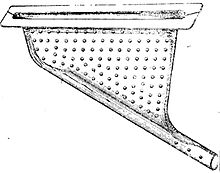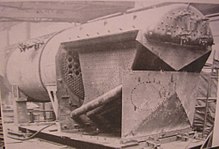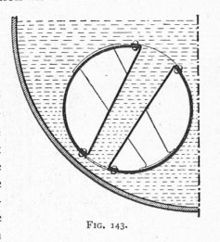




Thermic siphons (alt. thermic syphons) are heat-exchanging elements in the fireboxorcombustion chamber of some steam boiler and steam locomotive designs. As they are directly exposed to the radiant heat of combustion, they have a high evaporative capacity relative to their size. By arranging them near-vertically, they also have good water circulation by means of the thermosyphon effect.
The concept of a self-circulating thermic syphon began with stationary boilers and relatively simple Galloway tubes. They reached their peak in steam locomotive boilers, where the complexity of a syphon was justified by the need for a compact and lightweight means of increasing boiler capacity. One of the best-known forms for locomotives was invented by the English locomotive engineer John L. Nicholson who received a US patent.[1][2][3] The Nicholson form combined a complex shape that provided more heating area in a given space than did the earlier tubes and funnels, yet was simple to make, being folded from a single sheet of steel.

The first high-pressure boilers were a large drum with a central flue, such as the Cornish and Lancashire boilers. Simple tubes were inserted across this flue.[4]
|
| |
|---|---|
| Simple boilers |
|
| Fire-tube boilers |
|
| Water-tube boilers |
|
| Electric boilers |
|
| Boiler components |
|
| Boiler peripherals |
|